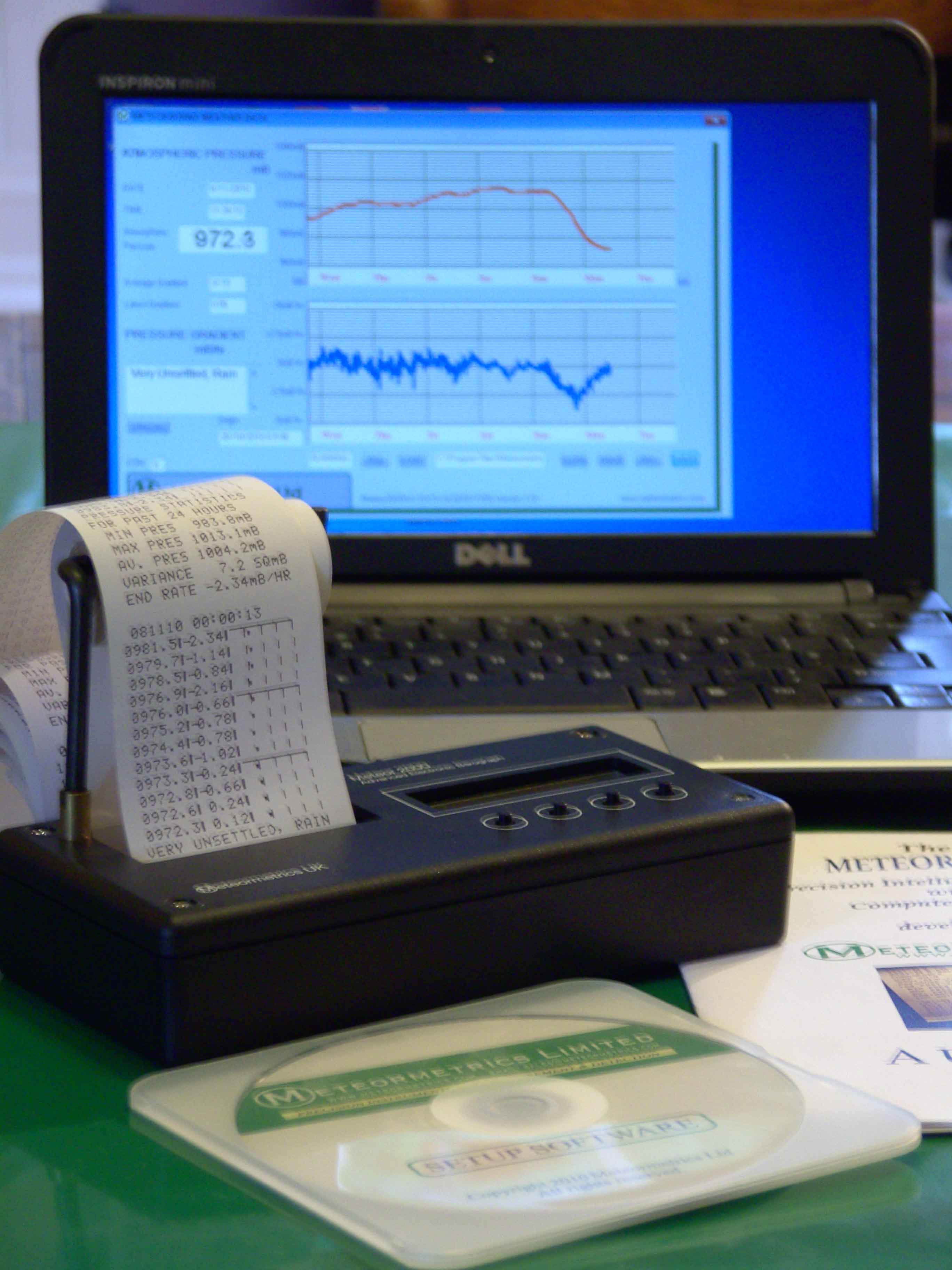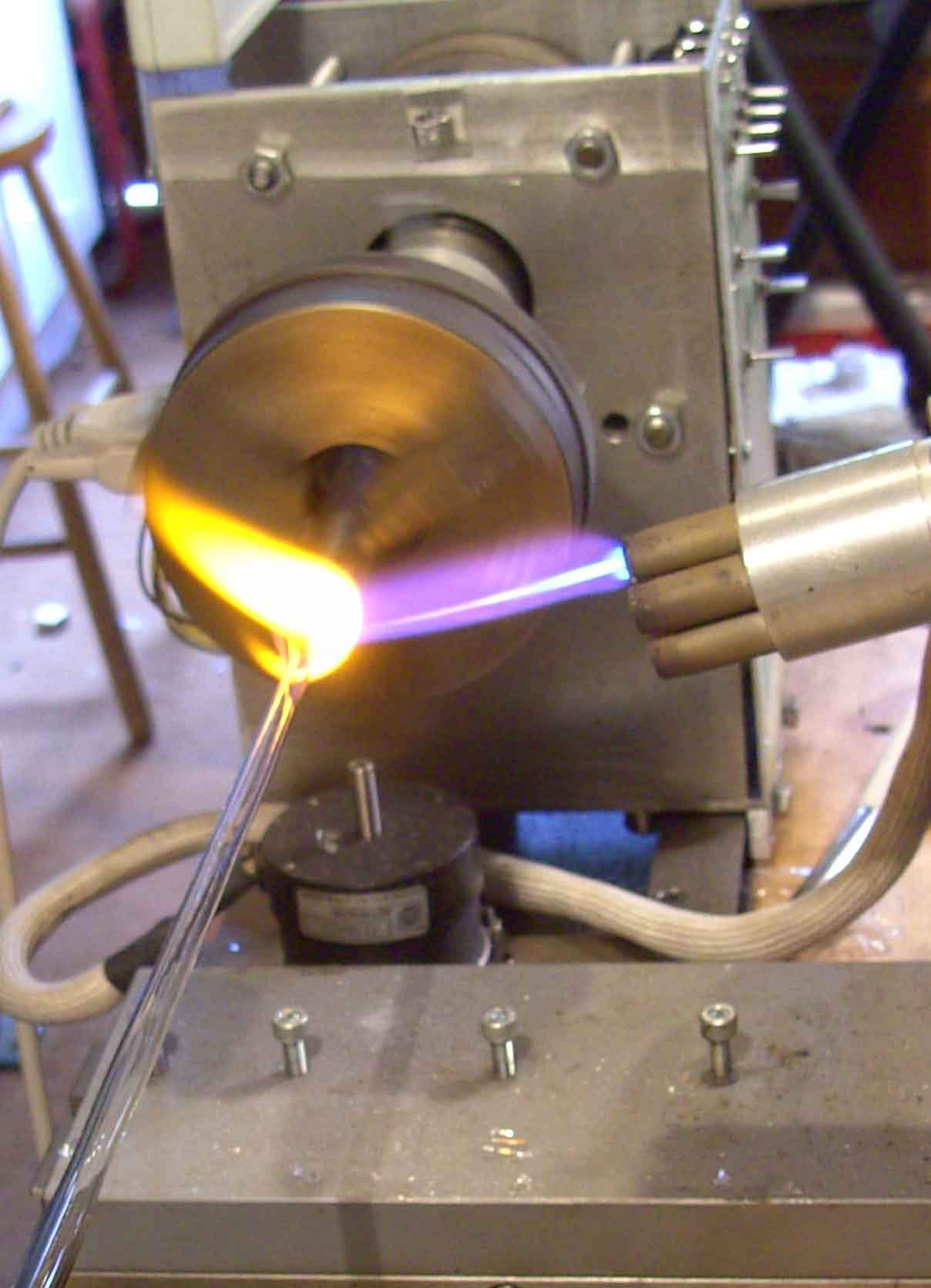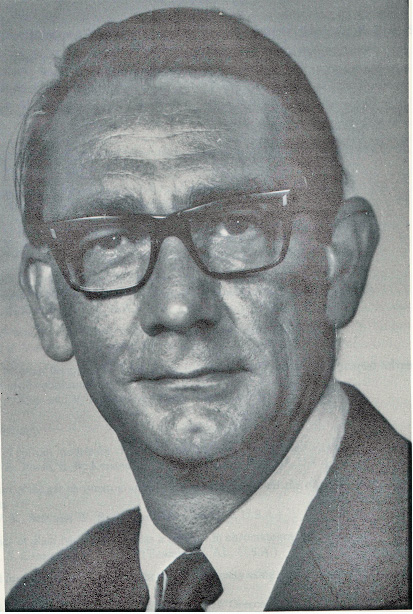
Specialising in custom-designed, precision scientific instruments, built, programmed and calibrated
to the most exacting standards. The range includes precision dataloging barographs,
with built-in statistical analysis, Barographic Transient Event Recorders
and computer-interfaced detectors and sensors
for environmental monitoring & process control.

A site dedicated to scientific techniques, experimental methods, &
investigative tools for the inventor, researcher
and laboratory pioneer. Articles on glassblowing, electronics, metalcasting, magnetic
measurements with new material added continually. Check it out!
www.drkfs.net
Derivatization
The
phenomenon of Fluorescence has two main areas of application in
practical chemistry and those are mostly involved with analysis.
Fluorescence can permit the measurement of a substance that uniquely
has fluorescent properties when mixed with a large number of other
compounds that do not fluoresce. In addition because Fluorescence can
provide a relatively strong signal against a very low noise
background, the technique can be easily used to detect substances at
the 10-8- 10-9g/ml concentration level. In a10 μl
sample cell this would be equivalent to a mass of 10-10 -
10-11 g (i.e.,.10-100 pg). Such
sensitivities are readily obtainable and are nowhere near the lower
limit of measurement.
Unfortunately
relatively few substances fluoresce and so a number of reagents have
been developed to provide fluorescent derivatives that can improve
the sensitivity of the analysis. Such reagents are also employed in
liquid chromatography to improve levels of detection. Examples of
some effective fluorescent reagents are as follows.
One of the most popular fluorescent reagents is 5-dimethyl
aminonaphthalene-1-sulphonyl chloride (dansyl chloride, DNS-chloride
or DNS-Cl). dansyl chloride reacts with phenols and primary and
secondary amines under slightly basic conditions to form a
fluorescent suphonate ester or suphonamide. The quantum efficiency of
dansyl derivatives is high; whereas the reagent
itself does not fluoresce.
Unfortunately, the hydrolysis product, dansyl ic acid, is strongly
fluorescent and causes interference with water-soluble derivatives.
The derivatives, however can often be removed by a subsequent
chromatographic process. The detection limits of the dansyl
derivatives are often in the low nanogram range (ca>1 x10-9
g/ml) and the
excitation and emission maxima can vary between 350-370 nm for
excitation and 490-540 nm for emission. This reagent has been used
successfully in the analysis of amino acids, alkaloids , barbiturates
and pesticides .
4-Chloro-7-nitrobenz-2,1,3-oxadiazole
(NBD chloride) reacts with aliphatic primary and secondary
amines to form highly fluorescent derivatives. Aromatic amines,
phenols and thiols yield weakly or non-fluorescent derivatives;
consequently, the reagent is specific for aliphatic amines. The
reaction is carried out under basic conditions and the products are
extractable from aqueous mixtures by solvents such as benzene or
ethyl acetate. The Fluorescence can be significantly reduced by the
presence of water and so the solution should be dry. Detection limits
are in the fraction of a nanogram range ( 2-5x 10-10g/ml). The advantage of this reagent over dansyl chloride is that both
the reagent and its hydrolysis products are not fluorescent.The excitation and emission wavelengths are also higher (480 nm
excitation and 530 nm emission). NBD chloride derivatives have been
used for the analysis of amino acids, amphetamines , alkaloids and
nitrosamines.
Fluorescamine
(4-phenylspiro(furan-2-(3H),1'-phthalan)3,3'-dione) is also a
commonly used Fluorescence reagent. It reacts almost instantly and
selectively with primary amines, while the excess of the reagent is
hydrolyzed to a non-fluorescent product. The reagent itself is
non-fluorescent. The reaction is carried out in aqueous acetone at a
pH of about 8-9. The excitation and emission wavelengths are 390 nm
and 475 nm respectively. Two disadvantages of the reagent are its
cost and unfortunately the products
are less stable, cannot be stored
and should be used for analysis immediately after formation.
Fluorescamine has been employed in the analysis of polyamines ,
catecholamines and amino acids.
A
less costly alternative to Fluorescamine is o-phthaldehyde (OPT), the
derivatives of which are more stable and consequently can be stored
overnight if necessary. It is used in a similar manner to
fluorescamine the detection limits being about 0.1 ng (ca 4 x 10-10g/ml). OPT has been used in the analysis of dopamine, catecholamines
and histamines. Other Fluorescence Reagents that are sometimes used
include 4-bromoethyl-7-methoxycoumarin, diphenylindene , sulphonyl
chloride, dansyl -hydrazine and a number of fluorescent isocyanates .
For
further information on derivatizing reagents the reader is strongly
recommended to refer to the Handbook of Derivatives for
chromatography edited by Blau and Halket [8].

About the Author
RAYMOND PETER WILLIAM SCOTT was born on June 20 1924 in Erith, Kent, UK. He studied at the
University of London, obtaining his B.Sc. degree in 1946 and his D.Sc. degree in 1960.
After spending more than a decade at Benzole Producers, Ltd. Where he became head of
the Physical Chemistry Laboratory, he moved to Unilever Research Laboratories as
Manager of their Physical Chemistry department. In 1969 he became Director of Physical
Chemistry at Hoffmann-La Roche, Nutley, NJ, U.S.A. and subsequently accepted the position
of Director of the Applied Research Department at the Perkin-Elmer Corporation, Norwalk, CT, U.S.A.
In 1986 he became an independent consultant and was appointed Visiting Professor at Georgetown
University, Washington, DC, U.S.A. and at Berkbeck College of the University of London; in 1986
he retired but continues to write technical books dealing with various aspects of physical chemistry
and physical chemical techniques. Dr. Scott has authored or co-authored over 200 peer reviewed
scientific papers and authored, co-authored or edited over thirty books on various aspects of
physical and analytical chemistry. Dr. Scott was a founding member of the British chromatography
Society and received the American Chemical society Award in chromatography (1977), the
M. S. Tswett chromatography Medal (1978), the Tswett chromatography Medal U.S.S.R., (1979),
the A. J. P. Martin chromatography Award (1982) and the Royal Society of Chemistry Award in
Analysis and Instrumentation (1988).
Dr. Scott’s activities in gas chromatography started at the inception of the technique,
inventing the Heat of Combustion Detector (the precursor of the Flame Ionization Detector),
pioneered work on high sensitivity detectors, high efficiency columns and presented fundamental
treatments of the relationship between the theory and practice of the technique.
He established the viability of the moving bed continuous preparative gas chromatography,
examined both theoretically and experimentally those factors that controlled dispersion
in packed beds and helped establish the gas chromatograph as a process monitoring instrument.
Dr. Scott took and active part in the renaissance of liquid chromatography,
was involved in the development of high performance liquid chromatography and invented
the wire transport detector. He invented the liquid chromatography mass spectrometry
transport interface, introduced micro-bore liquid chromatography columns and used them
to provide columns of 750,000 theoretical plates and liquid chromatography separations
in less than a second.
Dr. Scott has always been a “hands-on” scientist with a remarkable record of accomplishments in chromatography ranging from hardware design to the development of fundamental theory. He has never shied away from questioning “conventional wisdom” and his original approach to problems has often produced significant breakthroughs.


